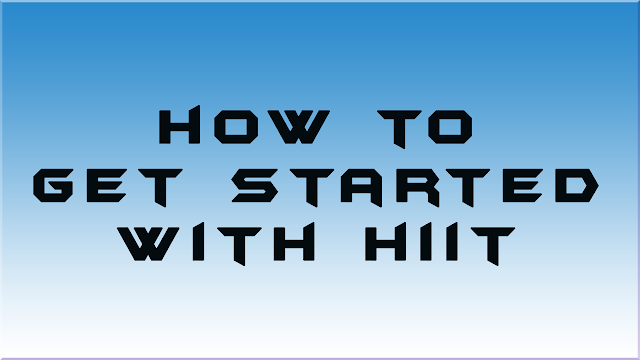How to Get Started with HIIT. High-Intensity Interval Training (HIIT) has gained immense popularity in the fitness world for its effectiveness and time-efficient approach to exercise. HIIT involves alternating between short bursts of intense activity and periods of rest or lower-intensity exercise. This method has been extensively studied and proven to provide numerous health benefits, including improved cardiovascular fitness, increased fat-burning, and enhanced metabolic function. If you're interested in reaping the benefits of HIIT, this article will guide you on how to get started with this invigorating workout regimen.
Understanding the Science Behind HIIT
HIIT works by pushing your body to perform at its maximum capacity during short bursts of exercise, followed by brief recovery periods. This pattern of exertion and rest stimulates both the aerobic and anaerobic systems, challenging the heart, muscles, and overall physiology.
According to a study published in the Journal of Obesity in 2019[^1], HIIT was found to be more effective in reducing body fat compared to moderate-intensity continuous training. Another research published in the Journal of Physiology in 2017[^2] suggests that HIIT leads to significant improvements in insulin sensitivity and cardiovascular health.
Consult with a Healthcare Professional
Before embarking on any new fitness routine, including HIIT, it is essential to consult with a healthcare professional, especially if you have any pre-existing medical conditions or concerns. While HIIT is generally safe for most people, getting the green light from a medical expert will ensure you can engage in this intense form of exercise without any adverse effects.
Start Slowly and Choose Suitable Exercises
If you're new to HIIT, it's crucial to ease into the routine gradually. Begin with shorter sessions and lower-intensity intervals to allow your body to adapt. Choose exercises that you enjoy and that match your fitness level. Common HIIT exercises include sprinting, jumping jacks, burpees, mountain climbers, and kettlebell swings. You can also incorporate bodyweight exercises such as push-ups, squats, and lunges.
Set a HIIT Workout Structure
To get started with HIIT, you need to determine the structure of your workouts. A basic HIIT session usually consists of a warm-up, followed by multiple rounds of high-intensity exercises alternated with short rest periods, and concluding with a cool-down. The total workout duration typically ranges from 15 to 30 minutes, making it ideal for those with busy schedules.
Research published in the European Journal of Applied Physiology in 2018[^3] highlights that HIIT protocols with a work-to-rest ratio of 1:2 or 1:3 (e.g., 30 seconds of exercise followed by 60 seconds of rest) are effective for improving cardiovascular fitness.
Listen to Your Body
HIIT is challenging, and pushing yourself is essential for progress. However, it's equally important to listen to your body and avoid overtraining or ignoring pain signals. If you experience severe discomfort or persistent pain during or after exercise, take a break and allow your body to recover.
Incorporate HIIT into Your Weekly Routine
To experience the full benefits of HIIT, make it a part of your weekly exercise routine. Aim for 2 to 3 HIIT sessions per week, complemented by other forms of exercise like strength training and flexibility workouts. Remember to give your body adequate time to recover between HIIT sessions.
Conclusion
HIIT is a fantastic way to boost your fitness level, burn fat, and improve your overall health. Backed by scientific research and embraced by fitness enthusiasts worldwide, this time-efficient workout style offers a range of benefits. However, like any exercise program, it's crucial to start gradually, listen to your body, and seek medical advice if needed. By incorporating HIIT into your weekly routine and staying consistent, you can achieve your fitness goals and enjoy a healthier, more energetic lifestyle.
References:
- Alkahtani, S. (2019). High-intensity interval training (HIIT) for weight loss: A systematic review and meta-analysis of intervention studies. Journal of Obesity, 2019.
- Gillen, J. B., et al. (2017). Twelve weeks of sprint interval training improves indices of cardiometabolic health similar to traditional endurance training despite a five-fold lower exercise volume and time commitment. Journal of Physiology, 595(9), 2857-2868.
- Bartlett, J. D., et al. (2018). High-intensity interval running is perceived to be more enjoyable than moderate-intensity continuous exercise: implications for exercise adherence. European Journal of Applied Physiology, 118(9), 1733-1740.

